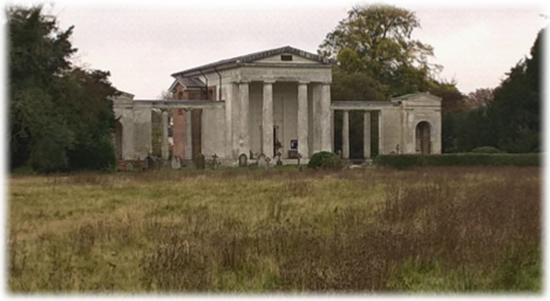
Distance: 12.6 miles
Start/Finish: St Albans Road, Codicote (plenty of on-street parking near the beginning of the walk); Roman museum car park, Verulamium Park, St Albans (pay and display).
Map: Ordnance Survey Explorer map 182.
Public transport: There a number of buses linking Codicote to St Albans – via Welwyn, Welwyn Garden City and Hatfield – but requiring transfers. They are the 215, 314 and 315 and the 300 and 301. www.rome2rio.com/s/Codicote?St-Albans. Please refer to timetables before setting out. Codicote has no rail link. If possible this works better as a two car, parked beginning and end, arrangement.
Pubs/Restaurants:
*The Swan is c.650 yards off route
Please make sure you check with the pub/restaurant for their opening times.
Route: The route from Codicote to St Albans is so benign, user-friendly, delightfully straightforward and uniformly untaxing that even if was carpeted it wouldn’t be any more comforting to walk. It embraces the literary world more than once and there’s always another highlight around the next bend. From Shaw’s Corner in Ayot St Lawrence – the former home of 94-year-old playwright and critic George Bernard Shaw; it is where his ashes are scattered – to the ruins of Old St Lawrence Church and the placid meandering farm tracks and woodland walks en route to the River Lea at Wheathampstead. Then the remains of the Iron Age Scheduled Monument of Devil’s Dyke to the wonderfully “off the beaten track” John Bunyan pub – with its link to an equally important literary past in a ruin opposite – to the perfect rest stop at Sandridge, the burgeoning Heartwood Forest, the intriguing and arguably isolated architectural enclave of Childwick Green, the enclosed but orderly acres of its manor grounds and then the approaching views of St Albans Cathedral. I’ve walked this leg twice, in summer and in autumn, and every step was a pleasure.
It is easy to be seduced into uncritically extolling the different virtues of every Hertfordshire Way leg. To imply they are a Utopian day’s walking. Clearly that cannot be the case. Some have extensive skyscapes – and few people. Others are almost a magical, mystery tour. Occasionally there’s a feeling that it’s a “makeweight” walk; getting from A to B until something more enticing happens. And there are a couple of those I have to admit. A few perpetually delight while clocking up the miles. A couple, on paper, look nothing more than interesting. But are a revelation. All are different in their own idiosyncratic way.
As is Leg 4. If you were trying to coax a reluctant couch potato, or someone with a phobia about the countryside, to don walking boots and hit the trail, this journey would be the one to convince them that they’ve deprived themselves of one of the most joyous experiences in life. Fresh air, discovering our captivating landscapes and feeling a sense of achievement. Or sadly they might simply switch on ITV. Their loss. In more ways than one (said as an ex BBC1 news producer!!)
A word of warning: If embarking on this walk at a weekend beware of belligerent, uncompromising, speeding “I’ve got a bike so sod you” cyclists. Ayot St Lawrence seems to be over-run by garish Lycra and aerodynamic cycle helmets. A relentless stream of gung-ho cyclists sadly share much of the route to Wheathampstead. How could I forget the rider hurtling pell-mell towards me yelling “Out the way. Bring.. bring. Bell broken.” What irritates me about such cavalier behaviour is that many cyclists think they have an automatic right of way even if it means walkers being forced to leap into hedges to avoid them. There’s a lot to be said for punctures.
From Codicote High Street find St Albans Road (below left) and, keeping to the left hand pavement, walk a few hundred yards until a clear pavement starts on the right hand side behind a parking/waiting sign. An unobtrusive narrow pathway appears between two houses – there is no official Hertfordshire Way sign pinpointing the way here at present – leading to a narrow grass track (below middle) which takes you to Codicote Bottom Farm half a mile away. Walk alongside fields passing Codicote Church of England Primary School and the back of houses until it enters a wood, drops down two flights of steps bisected by a track, to arrive in Heath Hill.

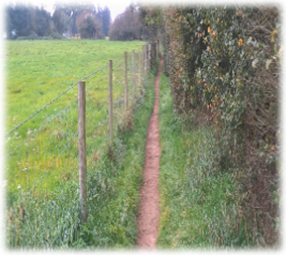

 Turn left and walk down the road, crossing the River Mimram at Bentleys Farm, to reach a grass triangle with a cluttered sign post directing you left to Shaw’s Corner and Ayot St Lawrence. A HW sign also directs you left at the junction (above right). Walk 100 yards along Kimpton Road to a white bungalow on your right, Ayot Lodge. Ahead, through a gate, a distinct broad path climbs between fields to a wooded skyline. At the top look back towards the hills around Codicote (right). Continue on the scenic two thirds of a mile ramble alongside plantations of young trees, parkland and arable fields. (below left and right). When another track joins from the right skirting Brimstone Wood locate the clear path ahead that follows a fence on the right – with good views to the left – heading slightly uphill (bottom left) to reach a gatehouse at the entrance to the Grade II listed Elizabethan Ayot St Lawrence Manor, once owned by William Parr, brother of Henry VIII’s last wife Catherine Parr. At the drive turn right into Hill Farm Lane virtually opposite the reputedly 14th century but definitely timber-framed Brocket Arms, a favourite haunt of George Bernard Shaw (both bottom right).
Turn left and walk down the road, crossing the River Mimram at Bentleys Farm, to reach a grass triangle with a cluttered sign post directing you left to Shaw’s Corner and Ayot St Lawrence. A HW sign also directs you left at the junction (above right). Walk 100 yards along Kimpton Road to a white bungalow on your right, Ayot Lodge. Ahead, through a gate, a distinct broad path climbs between fields to a wooded skyline. At the top look back towards the hills around Codicote (right). Continue on the scenic two thirds of a mile ramble alongside plantations of young trees, parkland and arable fields. (below left and right). When another track joins from the right skirting Brimstone Wood locate the clear path ahead that follows a fence on the right – with good views to the left – heading slightly uphill (bottom left) to reach a gatehouse at the entrance to the Grade II listed Elizabethan Ayot St Lawrence Manor, once owned by William Parr, brother of Henry VIII’s last wife Catherine Parr. At the drive turn right into Hill Farm Lane virtually opposite the reputedly 14th century but definitely timber-framed Brocket Arms, a favourite haunt of George Bernard Shaw (both bottom right). 
The Brocket Arms was originally the monastic quarters for the Norman church until the Reformation. Legend has it that a priest was tried and hanged in the building and has haunted the pub ever since. Another claim was that it was a stopping off point for pilgrims on their way to St Albans Abbey.
Past the pub on the immediate right are the picturesque ruins of the Grade II listed Old St Lawrence Church. Go through the graveyard to spend a few minutes looking around the remains. Only the tower, added around 1500, has a roof.

Tradition has it that when merchant Sir Lionel Lyde built Ayot House he felt the 12th century church blocked his view. He began to pull it down in 1775 until the Bishop heard of his vandalism and demanded demolition stop to prevent further destruction. The church fell into disuse when the replacement substantial neoclassical “Palladium”-style New St Lawrence Church with its Doric columns was built in 1799.
The church, a grand Grade I listed structure designed by Nicholas Revett, is variously described as Palladium, Greek Revival or Grecian Revival in architectural style. Despite the striking façade of portico and a screen of columns it only has a capacity of 120 and is used for services just once a month. On either side of the church are mausoleums for Lionel Lyde and his wife Rachel. Access to the churchyard is through a gate. Personally I think it is a vulgar, ostentatious and overblown eyesore out of keeping with modest and well-mannered Ayot St Lawrence.

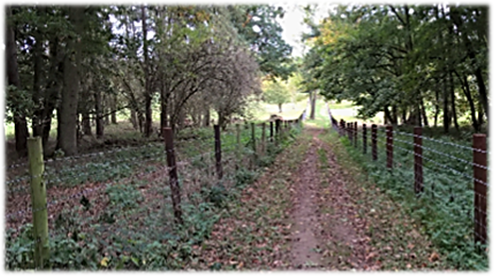

Where the path forks, the tree cover thins out and a large wood confronts, turn right and take the perimeter path with woods on your right to the minor Codicote Road (above right). Cross and enter a wood opposite and follow the undeviating path – which becomes Sheepcote Lane – the two thirds of a mile to Wheathampstead. The track crosses over the now dismantled branch of the Luton, Dunstable and Welwyn line which opened in 1858 and was heavily used by local commuters travelling to the mainline Midland Railway interchange at Luton. It fell victim to, initially increased car usage, and then the Beeching axe in 1965. The line was taken up in 1971. The path then passes underneath the A653 to arrive at a ford across the River Lea (see below).

The River Lea rises in Leagrave in the Chilterns and flows for 58 miles to Bow Greek in east London where it joins the Thames. It’s arguably the main reason why Wheathampstead is located where it is, having carved a valley rich in woodland and pasture. In the first century BC the Catuvellauni tribe settled in the area (see the history of Devils Dyke below) and the land has been occupied ever since. Its tributaries include the Mimram – which we have already met several times – the Beane and the Stort, all officially classified as shallow, fast-flowing and nutrient rich chalk streams (see references to chalk streams elsewhere). However, the Lea at Wheathampstead doesn’t have that rare status because a large proportion of the flow consists of treated effluent from the sewage plant at East Hyde. This means it’s cleaner than most rivers in England but the high levels of phosphates and nitrates disqualify it as a chalk stream, even though flora and fauna flourish.
Continue up Sheepcote Lane to Marford Road past the former pub, The Nelson. Which has gone the way of too many village inns along the route and is now an Italian restaurant. Never mind. The wonderful John Bunyan is only 20 minutes further on. Cross over into Dyke Lane and find the entrance to the wooded Devil’s Dyke – a Scheduled Ancient Monument worth exploring.
 The massive earthwork of Devil’s Dyke is thought to have been constructed around 2,000 years ago and may have partially enclosed a centre for the local powerful and warlike tribe the Catuvellauni as a place for people and livestock in times of unrest, though there is no irrefutable evidence for or against this theory. The tribe – led by Cassivellaunus, the first British individual whose name is recorded in history – led the resistance against Julius Caesar’s second invasion of the country in 54 BC. He was eventually betrayed by one of the tribes he had previously defeated and was forced into a treaty. Devil’s Dyke, together with nearby excavations The Moat and The Slab, enclose the largest defended site against early Roman occupation in Hertfordshire. Devil’s Dyke is around 30 metres wide and 12 metres at its deepest.
The massive earthwork of Devil’s Dyke is thought to have been constructed around 2,000 years ago and may have partially enclosed a centre for the local powerful and warlike tribe the Catuvellauni as a place for people and livestock in times of unrest, though there is no irrefutable evidence for or against this theory. The tribe – led by Cassivellaunus, the first British individual whose name is recorded in history – led the resistance against Julius Caesar’s second invasion of the country in 54 BC. He was eventually betrayed by one of the tribes he had previously defeated and was forced into a treaty. Devil’s Dyke, together with nearby excavations The Moat and The Slab, enclose the largest defended site against early Roman occupation in Hertfordshire. Devil’s Dyke is around 30 metres wide and 12 metres at its deepest.
Walk the 250 yards through the bottom of the dyke until you reach a steep set of wooden steps on your right which returns you to Dyke Lane. You can of course simply continue up Dyke Lane and forgo the dyke – but surely no one would be that uninquisitive! At the top of the steps turn left and walk the short distance to the entrance of Beech Hyde Farm. Go through the farm on the clear track, past buildings on the left, until you arrive at a bend in Beech Hyde Lane. Continue straight on for 75 yards until a wide opening into a field on the left leads to a clear-cut path heading up into the trees. There are some nice views back over Wheathampstead as you gain height. Enter the woods, pass some houses and appear in a charming clearing with a green, a few cottages and the John Bunyan. This is an obligatory stop, if only to say you’ve been to one of the most wonderfully located pubs in the county.
 Attempts to discover the true history of the pub have been thwarted by conflicting information. Brewers McMullen record the company bought it for £500 in 1898. Legend cites the impecunious 7th Earl of Cowper and his successors who owed the pub four shillings for its use. But as the earl died childless the pub was left permanently out of pocket! I am unconvinced that the debt made any difference to its history. Other sources say it has been a pub only since 1932 and was initially called The Prince of Wales. But the landlord told me it was opened as a pub 100 years ago to meet the needs of local farm labourers. Ultimately it doesn’t matter. It’s ‘hidden’ in a delightfully secluded spot – the hallmark of a great English hostelry. Those interested in quirky, intriguing inns should seek it out. The uninspired who pass it by don’t know what they are missing.
Attempts to discover the true history of the pub have been thwarted by conflicting information. Brewers McMullen record the company bought it for £500 in 1898. Legend cites the impecunious 7th Earl of Cowper and his successors who owed the pub four shillings for its use. But as the earl died childless the pub was left permanently out of pocket! I am unconvinced that the debt made any difference to its history. Other sources say it has been a pub only since 1932 and was initially called The Prince of Wales. But the landlord told me it was opened as a pub 100 years ago to meet the needs of local farm labourers. Ultimately it doesn’t matter. It’s ‘hidden’ in a delightfully secluded spot – the hallmark of a great English hostelry. Those interested in quirky, intriguing inns should seek it out. The uninspired who pass it by don’t know what they are missing.
Just across the green, and deserving of a few minutes attention, are the supported remains of the Grade II listed “John Bunyan’s chimney”, the 17th century brick structure the only remains of a cottage where the nonconformist preacher and author of Pilgrim’s Progress supposedly stayed and spread the word. Bunyan, born the son of a tinker in 1628, was a strong believer in religious freedom and was repeatedly punished for challenging the established church. He was imprisoned twice for his views and died in 1688 having written about 60 books. Although a native of Bedfordshire Bunyan was a frequent visitor to Hertfordshire and often preached in villages in the area. The cottage where he is said to have stayed was demolished in 1877 when new ones were built opposite.


 Having been rested, watered and possibly fed let’s head to Sandridge. What follows is a classic section of complementary cross-field and woodland walking with no chance of going astray, friendly underfoot and an ever changing landscape. Plus an introduction to one of the most imaginative, far-sighted and ambitious landscape projects in England – Heartwood Forest.
Having been rested, watered and possibly fed let’s head to Sandridge. What follows is a classic section of complementary cross-field and woodland walking with no chance of going astray, friendly underfoot and an ever changing landscape. Plus an introduction to one of the most imaginative, far-sighted and ambitious landscape projects in England – Heartwood Forest.
With your back to the front of the pub walk across the grass to Coleman Green Lane, turn right and walk 40 yards to a gated field entrance on your left with a gap alongside. Look for the roadside tree trunk on its side to pinpoint the way forward. Enter the large field and, keeping a hedge and trees to your right, continue on the perimeter path as its climbs steadily to a tree line (see left). Bear slightly right to pick up a strikingly clear no-nonsense footpath that does the landowner great credit (see right). If only it could be a template for all footpaths.
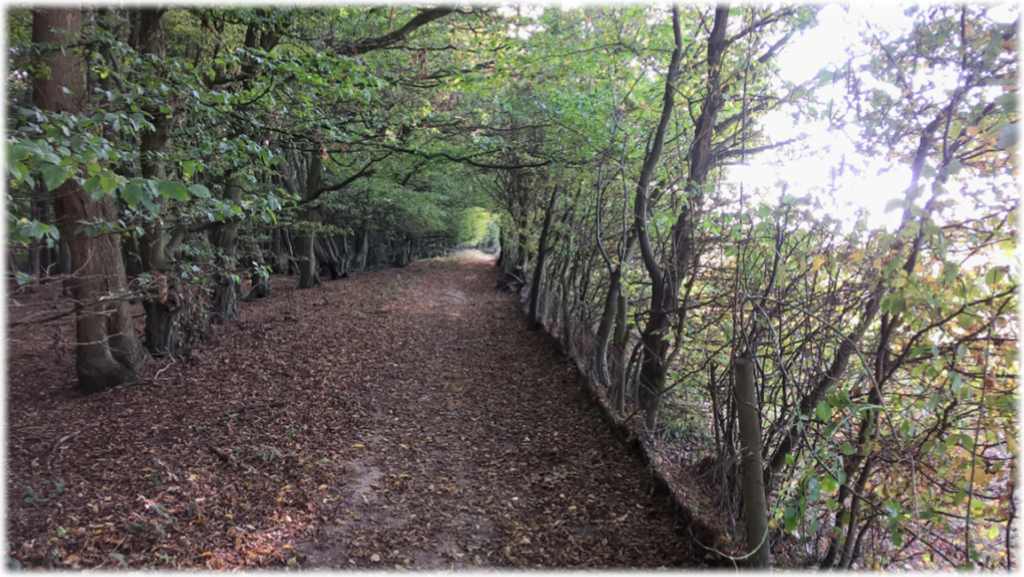
On reaching Titnol’s Wood head right skirting the trees until you reach a stile. Go over it, turn right and follow an untroubled route in the shadow of trees. On the right will soon emerge the maturing trees on the edge of Heartwood Forest, a 12 year project to create England’s largest new continuous native woodland embracing orchards, meadows, carpets of bluebells and patches of ancient woodland habitats; all criss-crossed by paths. It’s a visionary plan to lift the spirits.



Heartwood Forest (pictured above) covers 845 acres around the village of Sandridge, including 45 acres of precious ancient woodland – our equivalent of the rainforest – which now covers only two per cent of the United Kingdom. The Woodland Trust acquired the once arable farmland in 2008 and started planting trees over the winter of 2009/10. By March 2016 volunteers had planted 500,000 saplings – with another 100,000 to go. Significant open spaces, in the form of grassland and wild flower meadows, are also being created. The scattered ancient woodland comprises the pockets of Langley Wood, Pismire Spring, Well and Pudler’s Wood and Round Wood, already designated County Wildlife Sites. The landscape in the forest is typically benign Hertfordshire; gently undulating around and over a ridge between two dry valleys. It is destined to become one of the Woodland Trust’s top ten most visited sites in the country. For more information: heartwood.woodlandtrust.org.uk www.woodlandtrust.org.uk


St Leonard’s Church is Grade II listed and is notable for its chancel arch constructed of recycled Roman bricks. In 2014 it celebrated 900 years since its consecration – making it one of the oldest places of worship in Hertfordshire. Some sort of simply wooden church was probably built in 796 when the Abbey of St Alban’s took over the Manor of Sandridge. The main structure and ‘footprint’ as it stands today was added to the building in 1114. After the dissolution of the monasteries many valuable ornaments and fittings were removed and the church fell into neglect and decay. In 1692/3 the tower collapsed and the church was partially boarded up. In 1886 a Mr William White restored the church at a cost of £3,800 creating the St Leonard’s we see today. The lych gate – originally unveiled and dedicated in 1921 – pays tribute to the men from the parish who died in the two world wars – and those who returned from the first conflict. www.sandridgechurch.org.uk
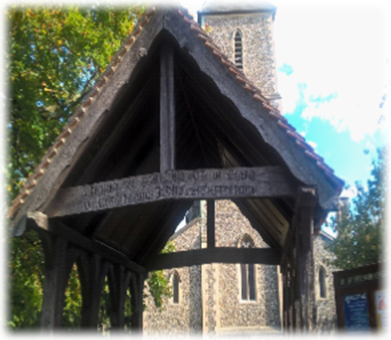
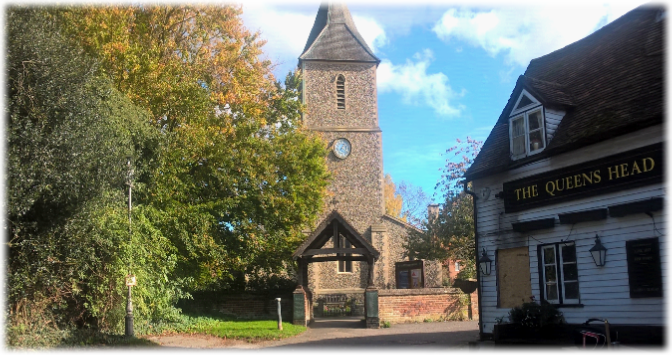
Sandridge has another more intriguing and clandestine link to World War II. At the top of nearby Woodcock Hill a secret Wireless Intercept Station was set up by the GPO in 1939 to tap into diplomatic traffic between the Axis powers which were then sent to the code breakers at Bletchley Park. The information was vital in helping Winston Churchill shape strategic combat decisions to alter the course of the war. It later became part of the Diplomatic Wireless Service under GCHQ.
To leave the settlement behind turn left from St Leonard’s Church, cross the road and continue for 200 yards to a sign posted tarmac path on the right between the village hall and some public conveniences. It skirts Sandridge Rovers FC’s pitch until a kissing gate gives access to pasture where you head diagonally left past a telegraph pole to a self-evident kissing gate in the middle of a cross field fence. Continue ahead to the edge of the field and turn right where a wooden gate opens on to Sandridgebury Lane. Look back at the views towards Sandridge (below left). Cross over into a wonderfully archetypal bridleway which climbs under a canopy of trees to meet Heartwood Forest again on the right with its patchwork of maturing native trees (below right).


With a large arable field on your left cross Cheapside Bridge over the Midland Main Line where a metal gate gives access to a diagonal cross field path heading through another gate into the yard of Cheapside Farm. Find the main wide tarmac road going off to the right and follow it for a third of a mile – ignoring a track joining from the right at the bend – to the A1081. Cross over to the raised pavement, turn right and walk the 300 yards to a pair of magnificent gates – and an impressively stylish lodge (below left) – where a sign to St Mary’s Church leads you into School Lane, a public right of way, amid grounds of immaculate rhododendron and laurel bushes to the bewitching and sequestered haven of Childwick Green.

For many people, including me, when first discovered this intriguing hideaway – a so-called ‘model village’ built for farm workers 100 years ago on a once huge estate whose history goes back to the 13th century – is a revelation. With its neatly mown village greens, pristine chain-and-post fencing, the old well and quaint 150-year-old church designed by Sir George Gilbert Scott (below left), Childwick Green is often described by estate agents as “one of the most glorious places to live in Hertfordshire.” Certainly many of its eclectically designed houses are only for those with deep pockets. Both estate and manor are closely associated with superlatives in the fields of sport and film. In 1906 the estate was bought by diamond and gold merchant Jack. B. Joel who bred countless winners at Childwickbury stud to become the winning owner in 1908, 1913 and 1914. When his son Harry ‘Jim’ Joel inherited the estate he continued the family’s winning ways. Between them they were among the most successful owners/breeders of the 20th century having 1,696 winners between 1900 and 1992. In the mid-1970s Jim Joel moved out of Childwick Bury Manor to be near his stud and at auction in 1978 it was sold to acclaimed film director Stanley Kubrick. At the same time Cheapside Farm was bought by the Luton Hoo Estate and nearly all the estate houses ended up in private hands. So, virtually overnight, this historic bolt-hole detached from the irritations of everyday life became a public place.


 Walk admiringly through Childwick Green to where a tarmac drive disappears into the distance and fenced off paddocks and parkland become your companions for the next cloistered mile as the tracts of the Childwick Bury estate provide a quintessentially English, if not monied, backdrop en route to St Albans. Pass Childwick Bury Manor and imagine the housework needed to keep it spick and span; for one-time owner, film director Stanley Kubrick, surely a 2001 (”cleans a big, big carpet”) Space Oddity. One can only imagine the cost and logistics of maintaining this ordered piece of Hertfordshire. I wouldn’t want the responsibility – until I won the lottery of course!!
Walk admiringly through Childwick Green to where a tarmac drive disappears into the distance and fenced off paddocks and parkland become your companions for the next cloistered mile as the tracts of the Childwick Bury estate provide a quintessentially English, if not monied, backdrop en route to St Albans. Pass Childwick Bury Manor and imagine the housework needed to keep it spick and span; for one-time owner, film director Stanley Kubrick, surely a 2001 (”cleans a big, big carpet”) Space Oddity. One can only imagine the cost and logistics of maintaining this ordered piece of Hertfordshire. I wouldn’t want the responsibility – until I won the lottery of course!!


When woods appear ahead and the tarmac road bears right enter a track in front of you between high hedges and trees, with Ladies Grove Wood on your right, to appear in a large open field where a trail is blazed ahead (right) and fine views accompany you on the last mile (see below). Batchwood Golf Club will appear on your left as you skirt the fairways and head downhill on a distinct path; St Albans Cathedral on the skyline ample proof your destination is nigh. There is a choice of tracks that both emerge onto a tarmac drive. The road is the way out of the Batchwood complex so cars will only be coming from the left. Follow the road down to Batchwood Drive, cross over and turn right to the roundabout. It is generally busy so be careful crossing. Look for the dip in Bluehouse Hill (A4147) opposite where the River Ver passes under the road and follow it to the first turning on the left – St Michael’s Street – which splits left to St Michael’s and right to the Roman Museum in Verulamium Park. The end of an uplifting day’s walking finishes in front of the museum.
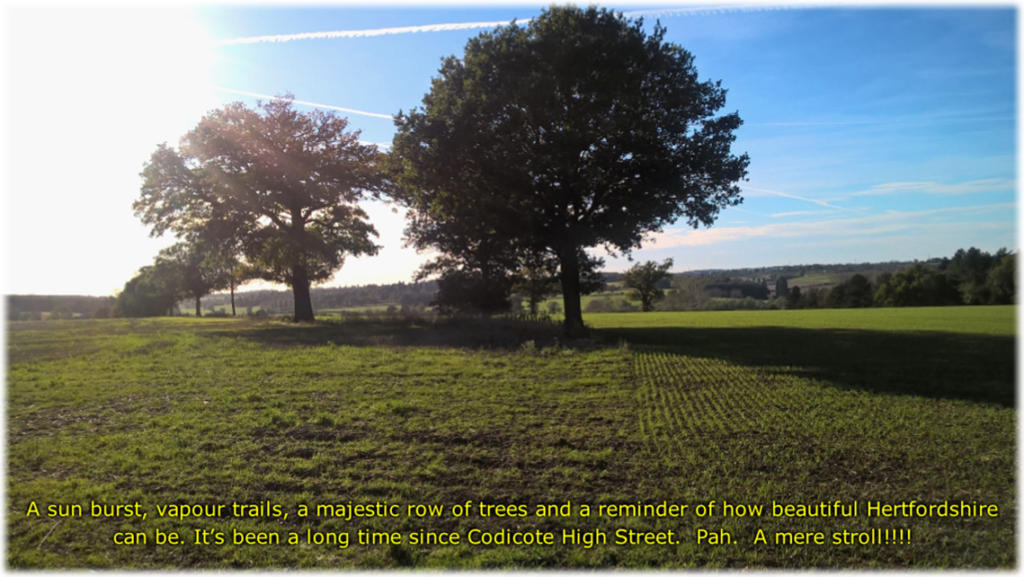
The 12 plus miles weren’t carpeted but it was a hell of a lot of fun and an experience to remember.
Next. Leg 5. Discover St Albans supreme role in the history of Christian worship, its still standing Roman past, the subjugation of its once robust precious chalk river and a cross country trek that delights in an old railway, and cricketing history.
